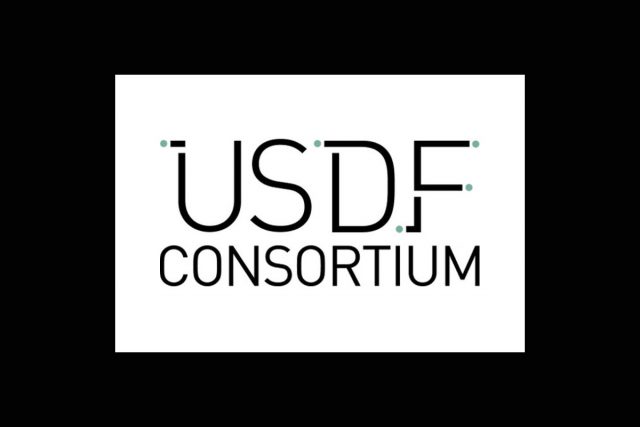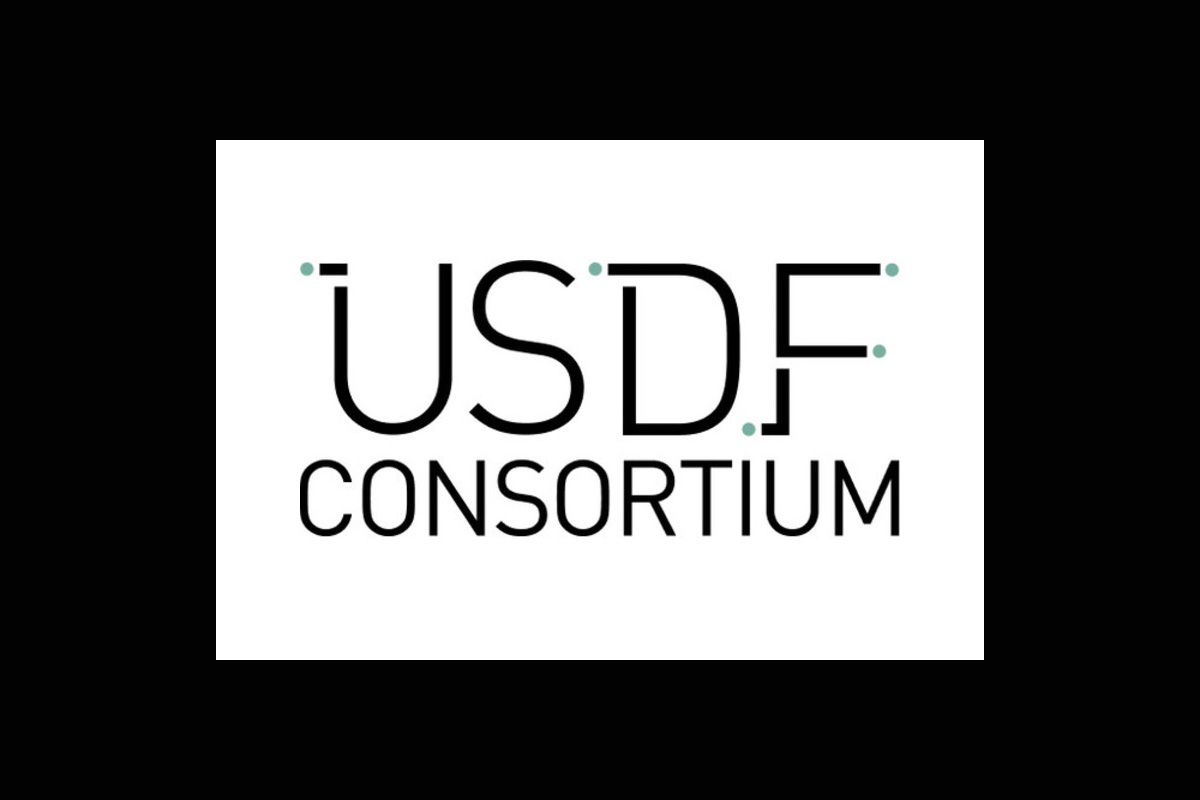Bank-minted stablecoins are here. And they may lead the charge in the adoption of web3 technologies. The first consortium of federally insured US banks has launched their USDF stablecoin. Backed by the members of the USDF Consortium, the stablecoin enables all kinds of possibilities within the United States financial infrastructure. We reached out to Ashley Harris who is the chair of the USDF Consortium. Here is what she had to say.

Ashley Harris Chair USDF Consortium
E-Crypto News:
Please, can you tell us the rationale behind the creation of the USDF stablecoin? What was the inspiration behind the founding of the USDF consortium?
We started with the view that blockchain has immense power to transform financial services and understood that a key component of that transformation is the need to represent money on blockchain.
We saw banks as best-situated to mint stablecoin because a bank-backed stablecoin is more sound, lower-risk and more regulated than the dominant non-bank minted stablecoins.
Bank-minted stablecoin such as USDF puts banks in the center of this evolving digital ecosystem and provides blockchain users with a trusted, highly regulated sponsor of stablecoin.
E-Crypto News:
Is the USDF Stablecoin insured?
USDF itself does not need to be insured. USDF is a digital marker that represents direct obligations of bank, and therefore, the deposits that underlie USDF on a 1-to-1 basis are eligible for FDIC insurance, subject to the standard deposit insurance coverage limit.
E-Crypto News:
How will bank-minted stablecoins affect the web3 space?
In the future, bank-minted stablecoins could play a key role in innovative Web3 use cases.
At this time, we’re focused on more near-term use cases.
E-Crypto News:
Why was the decision made to mint on the Provenance blockchain?
Provenance Blockchain was created specifically to handle financial transactions, with a robust ecosystem of banks, funds, and financial services firms that are part of a growing digital financial ecosystem.
Firms like Figure and Apollo are pushing innovative use cases on Provenance Blockchain. Provenance Blockchain is proof of stake, allowing for super-fast speed and scalability at low cost – much lower cost than Ethereum and other public chains.
The fact that Provenance is a public blockchain means that developers can freely innovate on Provenance, bringing new potential use cases for USDF.
At the same time, the USDF bank network is protected because USDF is programmed so that it can only move between wallets that are KYCed customers of banks.
Related: Show Me the Money- Does Tether Have The Cash?
E-Crypto News:
What has been the response of regulators to the minting of the USDF stablecoin?
We continue to have productive conversations with regulators.
We are actively engaged with all of the federal banking agencies and various state banking regulators and individual bank members will continue to work closely with their regulators as the network develops.
We understand that this is a new area and that banks will need to move forward in lockstep with their regulators.
Also, we note that the November 1 PWG Report on Stablecoins recommended that “legislation should limit stablecoin issuance, and related activities of redemption and maintenance of reserve assets, to entities that are insured depository institutions.”
We are also now seeing introduced legislation in-line with this recommendation, and will be following those developments closely.
E-Crypto News:
Will the USDF Stablecoin be available to retail users?
USDF will serve as the payment rails for a wide variety of use cases, including retail payments.
In this foundational use case, a customer of a bank can log into their bank’s online banking platform and have an option to send money via the USDF network.
The bank will mint and transfer USDF to the recipient bank on behalf of the customer, and the recipient bank will then credit the recipient customer’s depository account with the amount of money that was transferred.
This will be a 24X7X365 real-time payment network with significant cost advantages.
Related: Wells Fargo Jumps the Stablecoin Bandwaggon
E-Crypto News:
How has the USDF stablecoin been deployed? Please, can you give us practical use-cases?
USDF has been used to date in business to business payments and for real-time settlement of securities transactions.
The most immediate use case that we think every bank can benefit from is real-time, 24X7 payments.
When you start breaking down the behind-the-scenes costs for money transfer that banks incur, the value proposition is very high.
Banks will pay a fraction of the cost to facilitate payments, users will benefit from immediate transactions, and merchants will benefit by avoiding interchange fees.
Another promising area that we’re excited about is digital marketplaces.
With tokenization of financial assets, such as loans and securities, bank-minted stablecoins will play a critical role in facilitating real-time bilateral settlement without counterparty risk.
E-Crypto News:
How will the USDF stablecoin affect United States Financial Infrastructure?
We believe that USDF can play a central role in the modernization of the U.S. financial infrastructure.
USDF allows for 24x7x365 transactions, at a fraction of the cost of traditional payment rails, and it can act as programmable money – interacting with smart contracts on blockchain to facilitate a wide range of financial transactions.
The efficiencies and cost savings that USDF provides banks, merchants and customers promote financial inclusion and provide new opportunities for innovation.
Furthermore, the fact that USDF is exclusively minted by banks provides benefits in the form of protecting consumers, preventing financial crime and preserving stability of the financial system.
E-Crypto News:
Is the US financial space ready for this kind of stablecoin?
The US financial system is ripe for a bank-minted stablecoin. As blockchain uses expand, a bank-minted stablecoin will provide unique benefits that will give users trust and confidence in transacting on blockchain.
We created the USDF Consortium because we believe that banks are perfectly situated to provide this solution. Stablecoins have shown valuable use cases in the past few years, and we’re only in the early innings.
USDF offers a more compliant, transparent option that also ensures that banks will continue to play their important role in payments and other financial activities.
E-Crypto News:
What separates the USDF stablecoin from privately minted stablecoins?
Non-bank stablecoin issuers are subject to varying levels of regulation but nowhere the high level of prudential standards, regulation and supervision to which banks are subject.
As a result, concerns related to reserve assets, consumer protection and financial crimes have been raised in regard to non-bank-issued stablecoin.
By contrast, USDF, as an exclusively bank-minted stablecoin, is backed by banks and can only travel between accounts that have been KYCed by a bank.
USDF addresses the consumer protection, stability and regulatory concerns of non-bank issued stablecoins and offers a more secure option for transacting on blockchain.
E-Crypto News:
Are there any plans to include the USDF stablecoin in the wider financial space?
Because USDF is a representation of money at a bank, its applications are limitless.
We envision banks incorporating USDF to meet the diverse needs of their customers.
E-Crypto News:
How will this approach affect the current debate and discussions with regulators?
We understand that additional regulatory, executive and legislative expectations for stablecoin may be forthcoming.
We aim to position USDF as an alternative to non-bank issued stablecoin that is consistent with the aims of policymakers to bring stablecoin under a more highly regulated framework.
E-Crypto News:
What are the current plans for expansion of the USDF stablecoin use-cases?
Banks are starting with a variety of payments use cases – peer to peer, business to business payments, and merchant payments and will quickly leverage the foundational technology for a wide variety of use cases, such as invoice factoring, capital calls, lines of credit, and digital asset marketplaces.
E-Crypto News:
How does the introduction of the USD stablecoin affect the interoperability of US financial system infrastructure?
USDF leverages and builds on the existing US financial system infrastructure.
Because it is offered exclusively by banks and is directly backed by banks, USDF will be governed by all of the existing rules that apply to banking operations, as well as the network rules that the Consortium establishes.
E-Crypto News:
How will the USDF stablecoin be integrated into banking products?
Each bank will determine how to integrate USDF into their existing and new banking products.
In some use cases, such as peer to peer payments, the USDF network will be the rails through which payments move between banks.
This will provide banks with a lower cost option for facilitating payments and will keep money in local communities as a result of cost savings.








